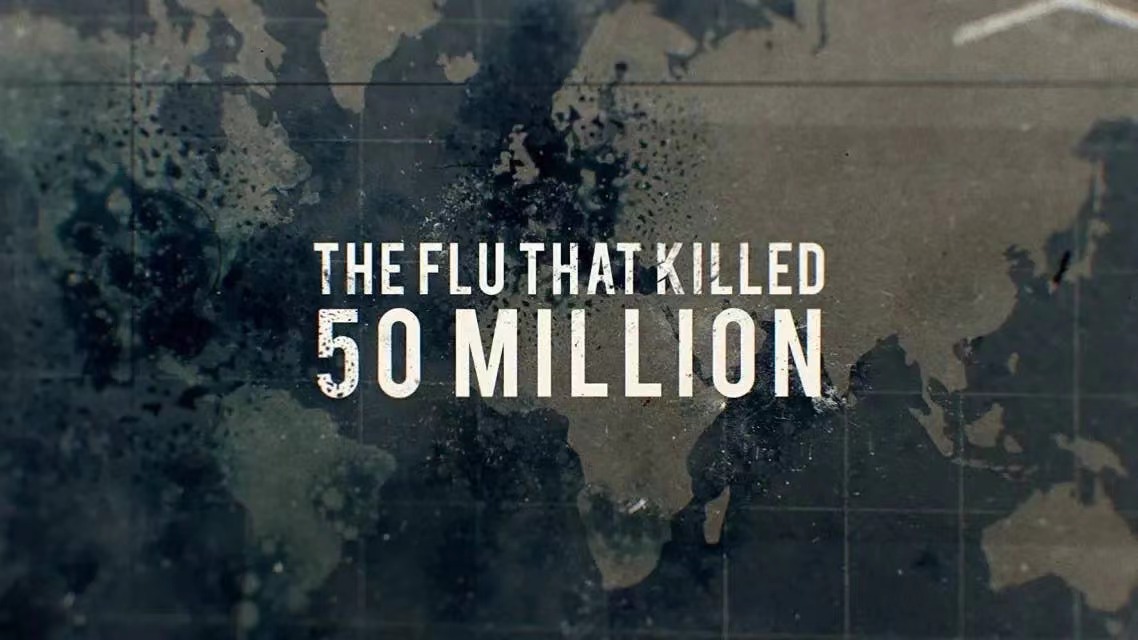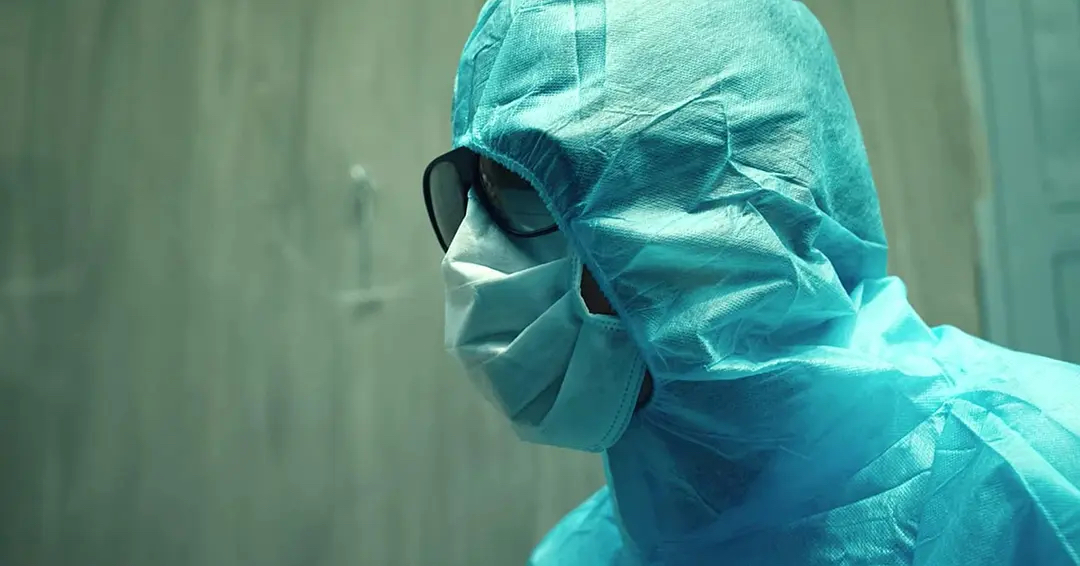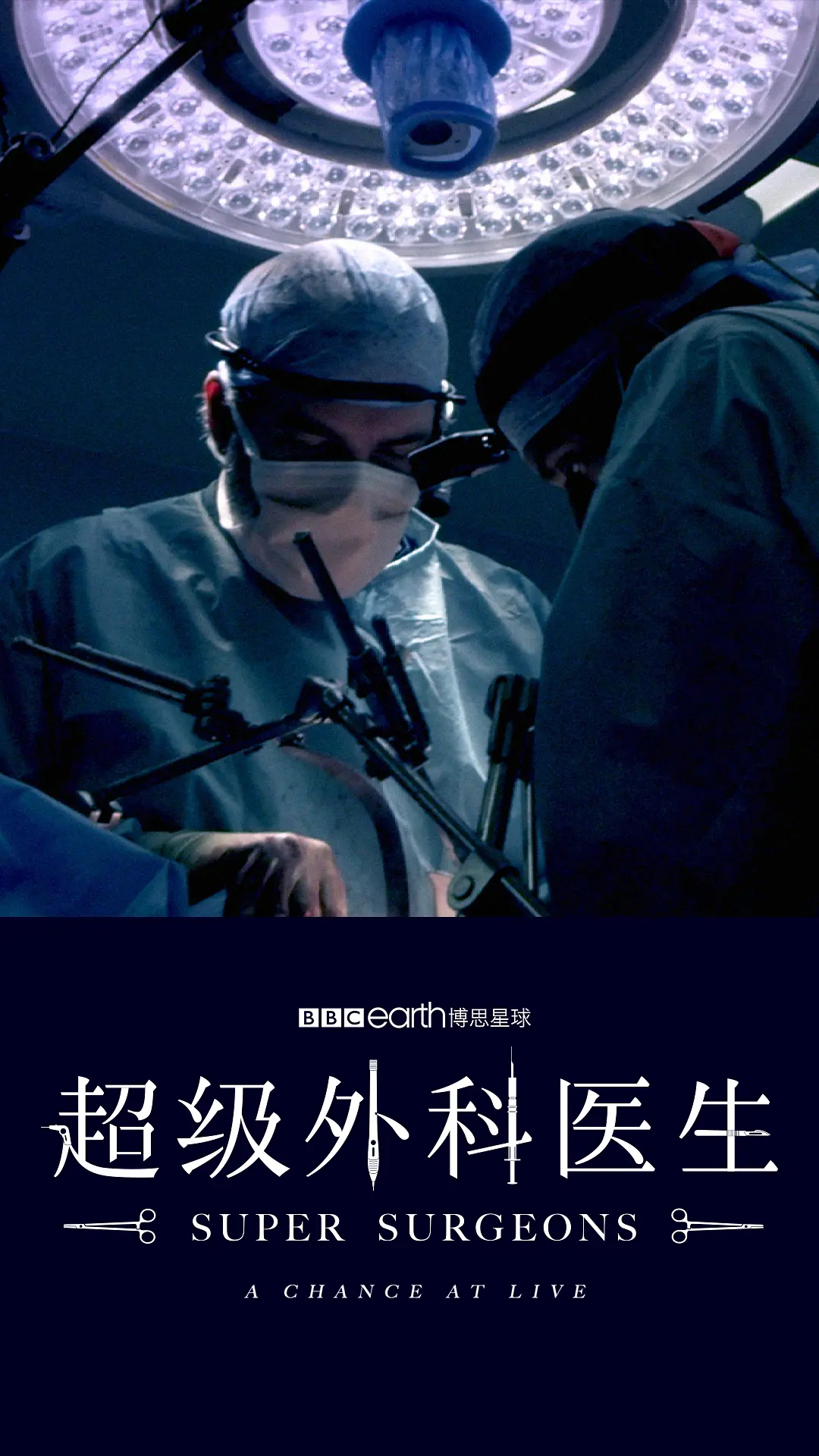
Editor's note: If you also like weird documentaries, welcome to bookmark this column.
Whenever someone is sick, people always say, "Nothing is as important as health." The next day, he recovers, forgets everything, and just does whatever he wants, over and over again, until someone around him suddenly dies, and he begins to feel uneasy. . Health products, running at night, going to the gym and pumping iron, "three small takeaways a day" are replaced by "I love my health kitchen".
None of the eight sufferings in the world can be escaped. Great blessings are unavailable, and simple blessings are not wanted to enjoy. It can be seen that living well in the present and cherishing the present is the most important thing.
This time we talk about disease. In myths and legends or fantasy novels, any kind of life form has fatal flaws. Human beings have appeared on the vast land and have fought against countless diseases. Although medicine is constantly improving, diseases are also rapidly escalating and iterating. This is a war without smoke and end.
Medical documentaries are often cruel, and the intertwining of pain, despair and hope of survival is always particularly touching. The past has taught us a lot, and the future remains uncertain. No one can predict what will happen next, fighting the dragon, but there will always be some people who create miracles.
influenza
During the Spring Festival of 2020, the sudden outbreak of the COVID-19 epidemic gave most Chinese people a deeper understanding of the concept of epidemics. We have paid a huge price in lives in the fight against the new coronavirus. The painful shadow even gives us reason to fear that one day mankind will be completely wiped out by the virus.

Screenshot of "Fighting Deadly Infectious Diseases"
"Anatomy of a Pandemic" is a documentary filmed in 2010 and produced by the Discovery Channel. It uses the H1N1 influenza (commonly known as swine flu) that was raging in Europe and the United States at that time as an entry point to explain the epidemic from many dimensions. For example, from a biological perspective, we talk about the morphology and invasion and spread process of epidemic viruses; from a historical perspective, we talk about the large-scale epidemics that human society has experienced; from a medical perspective, we explore how vaccines can resist viruses.
Can mass vaccination prevent and cure the epidemic? How does influenza virus generate and spread on a large scale? How to develop and produce vaccines in large quantities? "Pandemic" and "cluster infection", when these words are spread rapidly, mean that a certain virus is spreading wildly. How does the virus originate in the human body and spread rapidly?

Screenshot of "Fighting Deadly Infectious Diseases"
After centuries of evolution, humans have almost reached the top of the food chain, but the relationship between viruses and humans is still like that of army ants and elephants. Although the virus is small, once it invades the human body, it may kill someone. Therefore, although many microorganisms can cause large-scale influenza, the microorganisms that worry medical workers the most are viruses. How small is the virus? It's about one-millionth of a centimeter in size. It can only be seen with a microscope.
One hundred years ago, the “Spanish Flu” (1918 flu pandemic) swept across the world at an extinct rate, infecting hundreds of millions of people. The death toll caused by the H1N1 influenza A epidemic at that time was probably much higher than the death toll in World War I.
The BBC documentary "The flu that killed 50 million" tells the story of the epidemic and official measures at that time, and explains how to deal with possible future epidemic outbreaks.

Screenshot of "The Great Influenza That Killed 50 Million People"
Most viruses in the world originate from animals, and the variants of influenza viruses produced are almost endless. What’s even more frightening is that when animals bring brand-new viruses to which we have no natural immunity, and the human system cannot resist the infection, the spread will become fatal.
Netflix launched the documentary "Pandemic: How to Prevent an Outbreak" in January 2020. It has 6 episodes in total, each episode is about 50 minutes. It mainly looks at the "epidemic" from two aspects: illness and medical treatment. ”, involving epidemics such as the Spanish Flu, Ebola, Bird Flu, and SARS. If you want to fully understand the history of the struggle between influenza and mankind, you can basically understand it clearly by watching this documentary.

Screenshot from "Pandemics: How to Prevent Flu Outbreaks"
The film also carefully explores what kind of social problems an epidemic like this will cause in addition to widespread infection. Health service chains, general infrastructure operations, and food supplies will also experience disruptive effects for weeks.
Viruses and bacteria are both microorganisms and have been on the earth for more than 3.4 billion years. The development of human beings, counting from the beginning of agricultural society, is only 10,000 years. Especially in recent years, human beings' destruction and expropriation of nature has intensified the changes in the biological chain. Perhaps, in addition to paying attention to the epidemic, we should also consider how humans can live in harmony with nature.
Perhaps from another perspective, in the eyes of the Creator who designed the earth's game program, all living beings are equal, and human beings are not the existence of top students.
cancer
In human history, if you want to choose the king of serious diseases, it is cancer.
"The Emperor of All Maladies: A Biography of Cancer" is written by Siddhartha Mukherjee, a cancer physician at Columbia University Medical Center. The author spent 6 years and explained to readers the origin and development of cancer and the history of mankind's fight against and prevention of cancer with the help of detailed historical materials, professional documents, media reports, patient interviews and many other information.
In 2015, PBS TV station in the United States filmed a 3-episode documentary "Cancer: The Emperor of All Maladies" based on this book. Each episode is 2 hours long and tells the story of the past and present of cancer.

Screenshot of "Cancer: The King of Serious Illness"
What is cancer? Why get cancer? How to fight cancer? How to prevent cancer? Reviewed the century-old history of mankind's struggle against cancer. "The Los Angeles Times" published an article saying, "No matter what era, this documentary is closely related to each of us." "This documentary series is 'very attractive' and 'adopts the structure of a medical detective story, aiming to comprehensively interpret cancer. Impact on humanity'."
There is also a documentary about cancer in China, "Life", which made everyone cry.

"Life" poster
36-year-old Yuanchun was diagnosed with breast cancer. She comforted herself. There was an old man in his 70s who was diagnosed with breast cancer and lived for another 20 years after treatment. “Maybe getting this disease is not a bad thing. It may be a new beginning in life. It allows people to think better about themselves and life, and gives them better expectations for the future.”
Although she was very optimistic, during the examination, she found that the cancer cells had metastasized and she was no longer qualified for surgery. She would face a series of chemotherapy in the future.
When he was 11 years old, Mengfan developed a lump on his waist, which grew bigger and bigger at the back. It was diagnosed as giant cell tumor of bone in the sacrum. Because the tumor was huge and grew in an area rich in blood vessels and nerves in the sacrum, many big hospitals did not dare to admit it. . The tumor compressed the nerves and caused intestinal obstruction. It took Mengfan four to five hours to defecate. The plan determined by doctors from the Orthopedic Oncology Department of Peking University People's Hospital was to perform four embolization procedures. If the tumor shrank enough, surgery would be possible.

Mengfan and her father
Fortunately, after three embolisms, Mengfan was finally able to walk a few steps on his own. Mengfan's father said that in the past, his daughter could only sleep in bed 24 hours a day. When he heard his daughter screaming in pain and asking himself "What should I do, dad?", he felt heartbroken. no. But this is not the end of treatment.
If you encounter difficulties other than illness in your life, it is recommended to watch medical documentaries like these. You will find that the difficulties in front of you are not difficult.
"Super Surgeons" launched by British Channel 4 also focuses on people suffering from cancer. This documentary with a superhero-like title realistically depicts the daily lives of cancer patients and the doctors who want to do whatever it takes to save their patients' lives and provide them with a better quality of life.

"Super Surgeon" poster
After 41-year-old Jade underwent a mastectomy, throat cancer recurred and she could no longer speak to her daughter. Dimitrios, a 32-year-old photographer, unfortunately suffered from an extremely rare sarcoma and had to undergo amputation if he did not want to die. For him, this meant saying goodbye to his beloved photography career.
Lizzie, 35, was diagnosed with stage four bowel cancer, an incurable cancer, at an early age. But life gave Lizzie the backbone and motivation to live - she met her Mr. Right on social media, and the two soon fell in love and got married. Not long ago, a new tumor appeared in Lizzie's adrenal gland. If she wants to survive, she must take great risks and lie on the operating table again for surgery.
As head and neck surgeon Vinid Paleri says in the film: "When you look at these cancer patients, you realize that life is really unfair sometimes."
The perseverance and courage of these patients also impressed the doctors at The Royal Marsden Hospital in the UK. The hospital was founded in 1851 by surgeon William Marsden. After hundreds of years of development, the Royal Marsden has become the largest comprehensive cancer center in Europe, and its experimental research department has become the Intitute of Cancer Research. As one of the world's three largest cancer centers, this hospital has the world's top doctors and the most advanced treatments in the industry. Their goal is not only to save the patient's life from death, but also to improve the patient's quality of life so that they can live with dignity and happiness.
When you are dealt bad cards in life, sometimes you may not even have time to think...
mental illness
Mental disorders, including depression, bipolar disorder (bipolar disorder), schizophrenia, anxiety disorders, etc. Among them, depression appears to be particularly dangerous. Previously, depression had not received enough attention, and patients with depression were given various negative descriptions such as "psychological frailty" and "low self-esteem." In fact, depression has nothing to do with the weaknesses of human nature. Depression can happen to anyone, from quiet introverts to sunny people. According to reports, depression is likely to become the world's largest disease burden by 2030.

"Prisoner" poster
Speaking of mental illness, the most realistic film made in China is "Prisoner" directed by Ma Li. In a closed treatment area of a mental hospital in Northeast China, patients with schizophrenia, mania, depression, and alcohol addiction... are all subjected to coercion here. Sexual isolation treatment.
From the moment they woke up, they began to try to break free from this cell, but here, struggling was meaningless. Thereafter, under the control of drugs and unquestionable discipline, they will begin self-reflection, which touches the soul, will, desires, and thoughts. You need to have a strong mental capacity to watch this film.

"Prisoner" stills
In the film, a conversation between a boy and his mother one night was tearful. The boy asked the same question over and over again, and the mother answered in different ways over and over again. This boy unfortunately suffered from severe depression, but fortunately he had a mother who persisted and refused to give up.
Regarding bipolar disorder, in 2006 British comedian Stephen Fry made a video to openly talk about his condition - "Stephen Fry: The Secret Life of the Manic Depressive". He reviewed the course of his illness, visited many research institutions, and interviewed many friends and patients with bipolar disorder. At the end of each interview, there was a question: If there was a red button in front of you, and if you pressed it, your bipolar disorder would disappear, would you press it? The answer is shocking: only one of 40 people chose to press the button.
Depression affects people of all ages, races, genders, and socioeconomic groups. It makes people unmotivated at work, strains interpersonal relationships, and sometimes even makes people dull. So, if so many people suffer from depression, why do we keep silent about it? "Depression: Out of the Shadows" is a PBS program that explores the complex issues of depression, conducting an extensive and timely investigation of this disease.
CCTV's first 6-episode documentary series explaining depression, "How We Fight Depression", approaches real patients with depression and interviews experts and scholars in the medical and scientific fields, hoping to present the experience of fighting depression from multiple perspectives, including individuals, families, and society. Paths and methods.

"How We Fight Depression" Poster
Many patients with depression are out of danger in the hospital, but after returning to society, the haze of depression still cannot easily dissipate. The pursuit of happiness seems to be accompanied by the entire human development process. It is difficult for us to truly empathize with the pain of another life.
Many people presented in the program are bravely moving forward on the road to understanding the disease and fighting depression. They are trying to explore the power that makes life and the world not only continue, but also become bright and precious.
"The recently launched China Brain Project research studies depression as a very important disease in the China Brain Project research. These are considerations at the level of national strategy and scientific research strategy. Medical means and professional support are very important. Importantly, depression is a treatable disease, and the effect of this treatment will become better and better." Wang Gang, President of Beijing Anding Hospital Affiliated to Capital Medical University, said in an interview.
Rare disease
The last day of February every year is International Rare Disease Day.
According to the "China Rare Disease Definition Research Report 2021", a rare disease is defined as a disease with an incidence rate of less than 1 in 10,000 newborns, a prevalence rate of less than 1 in 10,000, and a disease population of less than 140,000.
There are more than 7,000 known types of rare diseases in the world. In China, about 20 million people suffer from rare diseases, 80% of which are caused by genetic factors. Although the number of new patients with rare diseases may seem insignificant in the face of a population of 1.4 billion, more than 200,000 people are diagnosed with rare diseases every year, and this number cannot be underestimated.
"Rare Life" is the first domestic documentary focusing on rare diseases. The film strives to vividly show the real situation of my country's rare disease groups and the current status of diagnosis and treatment. The team visited top tertiary hospitals such as Peking Union Medical College Hospital, West China Hospital of Sichuan University, Peking University First Hospital, Beijing Children's Hospital Affiliated to Capital Medical University, Children's Hospital Affiliated to Fudan University, Children's Hospital Affiliated to Zhejiang University School of Medicine, and Tianjin Medical University General Hospital. Unearthed touching stories of doctors and patients with "rare diseases". These stories vividly demonstrate people’s struggle against rare diseases: a struggle against the cruelty of fate and a struggle against the limitations of life.
"ALS", scientifically known as amyotrophic lateral sclerosis and motor neuron disease, is named after the progressive atrophy of muscles, which eventually makes them unable to move, as if they are frozen. The most familiar patient with ALS is the physicist Hawking (1942-2018). The disease has an insidious onset and is easily misdiagnosed in its early stages.
The disease has an incidence rate of 2 to 4 per 100,000, and about 80%-90% of patients survive for less than 5 years. It is recognized by the World Health Organization as one of the five major terminal diseases. This is an incurable disease, and there is no specific medicine that can only delay the disease.

"Freezing Life" Poster
The protagonist in the documentary "Gleason" is Steve Gleason, a brilliant football star and the initiator of the Ice Bucket Challenge.
At the age of 34, Gleason was diagnosed with ALS. Gleason, who received the bad news, was unusually optimistic. He comforted his wife and said that she didn't have to completely believe what the doctor said. Just like on the court, he is still as motivated as ever: "I want to defeat ALS and win this game." While his body can still move, he still regards himself as a healthy athlete, even more boldly than before. Experience various exciting projects: wild swimming, snow mountain climbing, outdoor adventure...
On the one hand, I don’t want my family to worry. On the other hand, he is going to be a father.
As a father, he wants to leave something to his children. To this end, he went to great lengths to seek content advice from his friends.
What do you want to know about your father?
Does he love me? How much do you love me?
What do you wish he could do for you?
Grow up with me and teach me how to be a good person.
He began to record a video diary in a voice facing his children. Talk about your own life experiences and share your life experiences. I hope that one day when I pass away, I can still bring strength to my children.
He also devoted himself to public welfare undertakings. A foundation was established to help those suffering from ALS who lacked material conditions. In addition, he also gave full play to his charisma and traveled around to give lectures to arouse public attention to this rare disease.
But the disease did not let go of this sunny and confident man. The pain engulfed him little by little, turning him from a healthy person into a person who needed help even if he coughed up phlegm. Finally, he underwent surgery to cut his trachea and insert a ventilator to prolong his life. Although the process was extremely painful, he was able to attend his son's 4th birthday.

Gleason and his son
Later, he also founded a charity team called "Never Give Up". Pushed the U.S. Congress to pass the Steve Gleason Act, a human rights bill for patients with ALS. Ensuring that the sound equipment and eye tracking systems required by ALS patients are included in the scope of medical insurance and medical assistance has directly promoted Congress’s reform of social security for ALS patients, benefiting countless ordinary families.
Steve Gleeson’s story tells us that we may not be able to change our lives, but we can still do something to increase the thickness of our lives in other ways.


